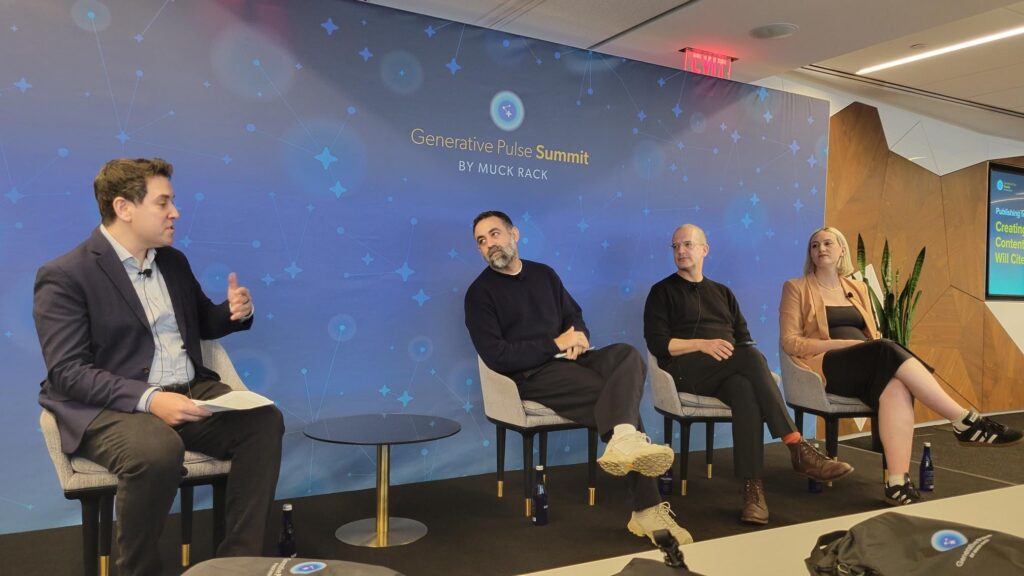Viatical settlements are a $100 billion industry that no one wants to talk about.
“It’s a little thing about death and money,” says entrepreneur Sean Strub, founder of Poz magazine and Metamorphics Media, a gay marketing consultancy and list brokerage in New York. “They’re impossible subjects for most people to deal with.”
A viatical settlement occurs when someone sells his or her life insurance policy to a third party in return for a cash settlement.
These settlements are for anyone with a life-challenging condition or shortened life expectancy, says David S. Landay, CEO of National Viatical Representatives (NVR), which has brokered such settlements since 1991. Typical candidates include AIDS and cancer patients as well as seniors.
Because of questions of privacy and propriety, direct mail is hardly ever used by Landay and his competitors. The preferred medium is direct response space advertising.
Landay buys space in publications aimed at those with life-challenging conditions, like Poz (for HIV-positive people) and Mamm (for breast cancer patients), attempting to reach caretakers in addition to people with shortened life expectancies.
“The more reputable companies don’t market direct,” Landay says. “I don’t think it’s ethical.”
Readers are not actually encouraged to sell a policy. Prospects are advised to look at all alternatives. The decision, Landay stresses, involves balancing the needs of the policy owner with that of the beneficiary.
“You’ll seldom see an ad saying `Sell your policy.’ It’s `If you want to sell your policy.’ The first may lead people to forget why they took out a policy in the first place,” he explains.
Landay also questions the ethics of, say, getting a list of cancer patients and sending them a direct mail pitch for selling their life insurancepolicies citing “the confidentiality question.”The average life insurance poli cy, Landay estimates, is between $75,000 and $125,000. Companies keep such information confidential. The amount a policy can be sold for depends on the life expectancy of the seller. Prices, he notes, have been going down. He charges the buyer 6%. He is comfortable that the buyer can absorb what he called a “low end” commission.
“It’s a nonprofit approach,” he explains.
NVR’s business is now less than half from people with HIV, and increasingly deals with cancer patients. As a result of a book Landay wrote – “Be Prepared” (St. Martin’s Press, 1998) – he realized the settlements were suitable for every life-challenging condition.
Viatical companies also advertise in such card packs as Direct Male.
“Those who participate consistently have done well with us,” says Andrew Isen, president of WinMark Concepts Inc., Washington, producers of the gay-targeted card deck, citing the Florida-based Medical Escrow Society as one example.
One reason is that the gay market tends not to have dependents, Isen points out. What he calls “mainstream audiences” leave their insurance to care for their dependents.
Isen adds that there were initially some concerns about carrying such ads in Direct Male. “We felt we might alienate some individuals, but we found that we did not receive even one negative comment.”
The company also hesitated because it didn’t want to help propagate the view that all gay men are HIV-positive or have AIDS. In addition, Isen didn’t want fellow advertisers to feel the pack was reaching a strictly HIV-positive audience. Even there, Isen says, “there was no negative impact.”
He is surprised that no viatical company has tried a traditional direct mail campaign.
“I don’t know why they want to [waste their money on] space ads,” Isen says, adding he does understand that potential recipients might feel threatened by such a mailing piece.
John Knoebel, president of Triangle Marketing Services, a gay marketing consultancy and list brokerage in New York, says that the viatical companies themselves often didn’t feel comfortable targeting a general gay audience.
“They felt they would be unable to reliably identify HIV or health status on lists of any kind,” Knoebel adds.
Furthermore, many felt direct marketing is in dubious taste and of dubious value.
There was a fear of negative feedback, matched by a desire not to affront people by the assumption they were critically ill, Knoebel notes. The marketing of viatical settlements, he feels, is restricted to space ads and card packs.
However, most of the names on the lists that viatical companies targeting gay audiences might use are covered by the space ads in gay publications. And, Knoebel notes, the list of people interested in such offers would have to include care givers and health professionals – names often outside of gay lists.
However, Strub says several viatical companies rented gay list segments off of the Poz list.
“There were mixed results,” he adds. “They worked for them as much as any list would work for them.”
Reflecting the growth of the industry into other life-threatening illnesses, Poz and Mamm both have had their share of viatical ads and list rentals.
Viatical settlements are “a good idea,” Knoebel adds, “an idea whose time had come because of the AIDS crisis, but viatical has moved off the AIDS area to cancer needs.”
The current size of the industry is difficult to estimate, says William E. Kelley, executive director of the Washington-based Viatical Association of America, since no one shares data out of competitiveness.
He suggests over $100 billion as being a fair estimate. HIV viatical settlements likely account for less than 20% of the total. Cancer would account for about half, and life settlements for seniors make up the balance.
Settlements vary, but are in inverse proportion to the life expectancy of the policyholder. Kelley suggests that someone in a hospice might get 90% of the face value; someone with six months to live might get 80%; and someone with ayear might get 70%. If life expectancy is up to two years, the holder is unlikely to realize more than 60%. Few buyers, if any, will buy if the life expectancy is greater than 24 months.
The average policy ranges between $60,000 and $80,000, since, as Kelley acknowledges, most Americans are underinsured.
A recent Conning & Co. study found that seniors comprise some 40% of the viatical market, four times what it was two year earlier.
Known as “life settlements” for seniors, the market is estimated at $100 billion by the Hartford, CT-based research company. With more than $492 billion of life insurance out there, the U.S. senior population represents an enormous marketing opportunity for viatical companies.
Strub adds that neither he nor anyone at Poz has heard of any seller being conned in viatical transactions. On the flip side, however, the buyer can be the victim of a fraudulent sale.
Kelley agrees, adding that while this is a legitimate investment opportunity, it is wrong to suggest the return is guaranteed.
“The product is high risk, and it’s not liquid. You can’t sell it back,” he explains.
Both Strub and Kelley alluded to a recent scam in Florida that used the promise of huge profits with viatical settlements as a lure for investors.
Kelley is also concerned about using direct marketing to sell viatical settlements to investors. He admits to being taken aback at the thought of turning on his television and seeing a pitchman saying “buy now and get a second one free.”
Whether or not the concept makes one uncomfortable, one thing is certain, notes Kelley: the business of viatical settlements has become a legitimate industry, especially for seniors or people terminally ill who don’t need their life insurance money for their estates or their heirs.



